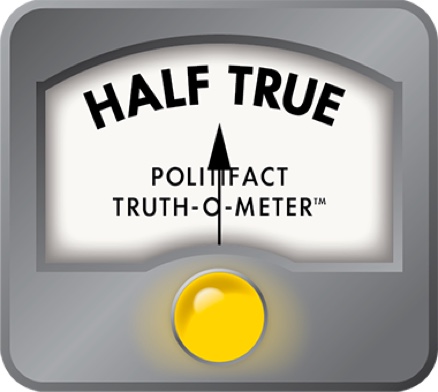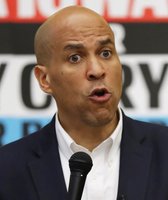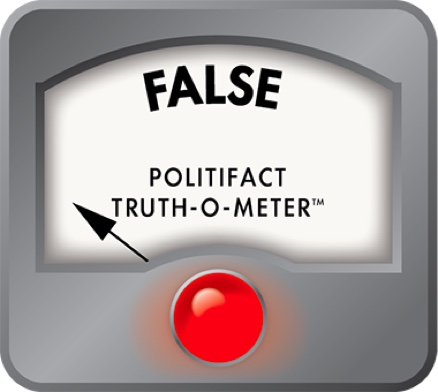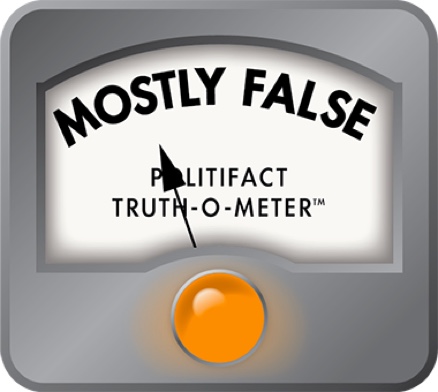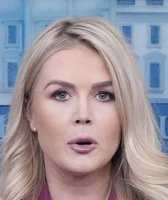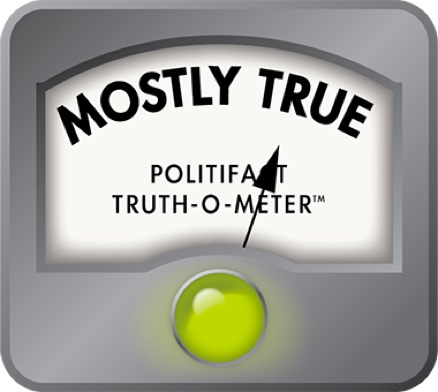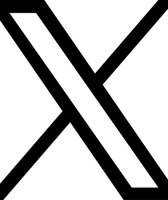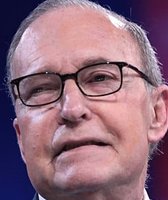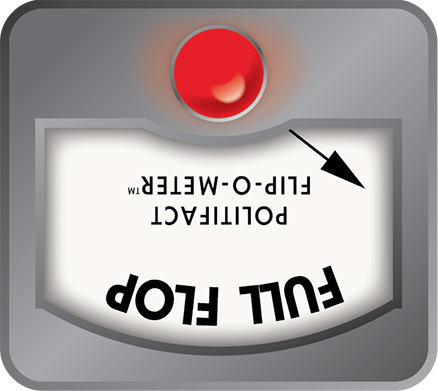Stand up for the facts!
Our only agenda is to publish the truth so you can be an informed participant in democracy.
We need your help.
I would like to contribute

President Donald Trump departs after signing an executive order announcing new tariffs at the White House on April 2, 2025. (AP)
If you listen to President Donald Trump and his allies discuss his sweeping tariff plans, one word pops up a lot: "Cheating."
During his April 2 announcement of what he called "liberation day," Trump released a list of new tariffs of up to 50% on virtually every country — a plan that took effect at midnight April 9 before he abruptly issued a 90-day pause hours later. (His April 9 change in course increased tariffs on China and kept a 10% across-the-board tariff on virtually all trading partners.)
When he unveiled his initial tariffs plan, Trump said, "For nations that treat us badly, we will calculate the combined rate of all their tariffs, non-monetary barriers and other forms of cheating."
Over the next few days, other administration figures echoed the "cheating" accusation.
"Our leaders allowed foreign countries to rig the rules of the game, to cheat, to steal, to rob, to plunder," White House adviser Stephen Miller said April 4 on Fox News. "That has cost America trillions of dollars in wealth. … They’ve stolen our industries."
Sign up for PolitiFact texts
White House adviser Peter Navarro said in an April 6 Fox News interview, "It's all these things that these foreign countries do that are designed explicitly to cheat us and are sanctioned by the World Trade Organization."
Are the countries facing these now-paused tariffs cheating the U.S. on trade? The White House didn’t provide evidence for this.
While cheating on trade does happen — genuine accusations of it can be adjudicated at the World Trade Organization — the White House’s formula for calculating the tariff rates leaned on how much of a trade imbalance a country has with the U.S., not on evidence of cheating.
Trump and his allies "tend to use the term ‘cheating’ as any action by a foreign country that leads to a bilateral goods trade deficit with the U.S.," said Kent Jones, an emeritus professor of economics at Babson College who specializes in trade policy. "On the face of it, this definition has no economic validity, since bilateral trade balances are generally determined not by trade and other government policies, but by specific patterns of trade by commodity."
Our analysis of the 10 countries with the highest announced tariff rates on April 2 showed that they are largely poor and small — and it is these factors, rather than unfair trade practices, that made them susceptible to the highest rates. Such countries export the resources they have and are too small and too poor, or both, to purchase much from the United States.
The White House did not respond to inquiries for this article. White House Press Secretary Karoline Leavitt said at the April 8 daily briefing that the country-by-country tariff rates were "very carefully crafted" and that they focused on both tariffs levied by the trading partner and "non-monetary" factors, such as regulations that inhibit trade.
What does it mean to "cheat" on trade?
There are ways a country can "cheat" on trade, by ignoring rules and norms of international trade policy. One way is "dumping," which means selling a product to a trading partner for an artificially discounted price. Another is through excessive government subsidies to producers, something the U.S. and other countries have accused China of doing. Several of these complaints have been upheld when taken to the WTO.
In these cases, the trade partner can assess duties — taxes on the imported goods — to try to cancel out the distortion. If this process cannot be resolved amicably, the parties can go to the World Trade Organization to arbitrate the dispute.
"A good example of this is the decades-long softwood lumber trade dispute between Canada and the U.S., where the U.S. claims that Canada unfairly subsidizes their softwood lumber industry through administratively determined fees, while Canada counters that nearly all of its lumber is on provincial public land and thus must come under provincial regulation," said Ross Burkhart, a Boise State University political scientist who specializes in trade policy.
Another type of cheating involves currency manipulation, in which a country interferes with the exchange rate for its currency in ways that make its exports cheaper to foreign buyers. This is something the U.S. and other countries have accused China of doing.
Sometimes, trading partners have accused the U.S. of cheating; critics have sometimes chafed when the United States bans the trade of certain products by saying they would threaten national security.
One could argue that Trump "cheated" in recent weeks by placing new tariffs on Canada and Mexico, effectively reneging on the U.S.-Mexico-Canada Agreement that he negotiated during his first term. That agreement set the trade rules among the three countries, and it did not allow the extra tariffs Trump imposed on both countries.
How did the White House determine the new tariff rates?
The White House’s formula for calculating the April 2 tariffs plan came from some basic numerical inputs. The formula took the U.S. trade deficit in goods (but not services) with a particular country, divided it by the total goods imported from that country, then divided that by two. Even if this calculation produced a small result, every country starts at a minimum of 10%.
Although some have criticized this formula, it’s based largely on how much of a trade deficit the U.S. has with a given country. Nothing in that formula accounts for actions that are commonly considered by trade law or norms to be a type of "cheating."
Many of these trade imbalances can be explained by factors that have nothing to do with breaking the rules.
What do the top 10 tariffed countries have in common?
We looked at the 10 countries or territories that Trump’s April 2 plan assigned the highest tariffs rates: Lesotho (50%), Saint Pierre and Miquelon (50%), Cambodia (49%), Laos (48%), Madagascar (47%), Vietnam (46%), Sri Lanka (44%), Myanmar (44%), the Falkland Islands (42%), and Syria (41%).
One thing these countries have in common is a high ratio of exports to the U.S. compared with their imports from the U.S. For instance, the value of Lesotho’s exports to the U.S. is roughly 85 times the value of its imports from the U.S. The closest ratio, for Syria, is still 5-to-1 exports to imports.
These countries share other characteristics. One is that they are poor compared to the U.S.
In gross domestic product per capita, a common measurement of income by country, the U.S. figure is 163 times Madagascar’s. The most equal nation is Vietnam, but even here the U.S. GDP per capita is 19 times Vietnam’s.
These countries are also small in population. The United States’ population is 100,000 times as large as the Falkland Islands’ population. The closest any of these countries gets is Vietnam; the U.S. is about 3 times as populous.
Most of these countries account for a tiny fraction of the United States’ overall trade volume. Vietnam has the biggest share; its exports account for just over 4% of total U.S. imports. The other nine are far smaller, with none exceeding a half-percentage-point share of U.S. trade.
Why are small, poor countries likely to have a trade surplus with the U.S.?
Experts say it’s natural for small, poor countries to have trade surpluses with the United States.
Madagascar, an island nation off Africa’s mainland, "has roughly 80% of the global supply of vanilla," Burkhart said. "The U.S. cannot produce vanilla, but needs it in foodstuffs, so purchases it. Madagascar is a relatively poor country, so it cannot make up in purchases what it makes in exported vanilla."
Saint Pierre and Miquelon, a French territory off the coast of Canada, "exported a massive halibut catch to the U.S. in 2024 as part of a territorial fisheries dispute," Burkhart said. But with only 5,500 people, the island territory is "so small that it hardly purchases anything from the U.S."
Lesotho, a country landlocked by South Africa, "exports diamonds and textiles and doesn’t import many expensive capital- and technology-intensive U.S. goods," Jones said. "Why should its bilateral trade with the U.S. be balanced?"
Experts said it is unrealistic to expect that tariffs will change the trade imbalances of these small economies. "There’s just no way the average resident of Madagascar will be able to buy a Cadillac Escalade," said Douglas Holtz-Eakin, president of the center-right American Action Forum, referring to an American manufactured SUV that can cost $87,000 to more than $160,000 new.
Rather, these countries are playing the economic hand that climate, location and natural resources have dealt them. In Sri Lanka, the chief export is tea; in war-torn Syria, it’s olive oil; in Laos, one of them is potash, an agricultural input.
Even if these countries were to achieve balanced trade with the U.S., that wouldn’t necessarily save them from tariffs. In 2024, the U.S. had trade surpluses with countries such as the Netherlands, Hong Kong, the United Arab Emirates, Australia, the United Kingdom, Panama, Brazil, Belgium and the Dominican Republic, yet these countries stand to be hit with the 10% minimum tariff.
One thing the top 10 countries aren’t doing is cheating on trade, experts agreed.
"If Trump wants to argue that their tariffs on U.S. goods are too high, or they are manipulating their currency values, or they are dumping, or they are using clandestine internal tax systems and regulations to disadvantage U.S. exports," Jones said, "he could document these practices and use U.S. trade laws to justify administrative trade restrictions to correct them."
Staff Writer Claire Cranford contributed to this report.
Our Sources
Donald Trump, remarks from the Rose Garden, April 2, 2025
Stephen Miller, remarks on Fox News, April 4, 2025
Peter Navarro, remarks on Fox News, April 6, 2025
Karoline Leavitt, remarks at the White House daily briefing, April 8, 2025
White House, list of tariffs by country, accessed April 9, 2025
White House, "Reciprocal Tariff Calculations," accessed April 9, 2025
Observatory of Economic Complexity, website, accessed April 8, 2025
Census Bureau, foreign trade index page, accessed April 8, 2025
Census Bureau, foreign trade balances by country, accessed April 8, 2025
World Population Review, population by country, accessed April 8, 2025
World Bank, GDP per capita by country, accessed April 8, 2025
World Trade Organization, "Technical Information on anti-dumping," accessed April 9, 2025
Associated Press, "A timeline of Trump’s tariff actions so far," accessed April 9, 2025
U.S.-China Economic & Security Review Commission, "WTO Cases Brought by the United States against China," January 2017
Rebecca Skaff, Lincoln Webb and Kyle Clahane, "Understanding China’s Currency Manipulation," 2018
Warren Coats, "Econ 101: Currency Manipulation," September 2019
Scott Lincicome and Inu Manak, "Protectionism or National Security? The Use and Abuse of Section 232," March 9, 2021
Brent Neiman, "The Trump White House Cited My Research to Justify Tariffs. It Got It All Wrong" (New York Times op-ed), April 7, 2025
American Enterprise Institute, "President Trump’s Tariff Formula Makes No Economic Sense. It’s Also Based on an Error," April 4, 2025
Australian Financial Review, "China really is the biggest trade cheat. The data shows it," March 10, 2025
Los Angeles Times, "U.S. imposes tariffs on steel from nine countries accused of dumping," July 11, 2014
Axios, "How to read the White House's tariff formula," April 3, 2025
New York Times, "How Are Trump’s Tariff Rates Calculated?" April 2, 2025
BBC, "How were Donald Trump's tariffs calculated?" April 3, 2025
Email interview with Gary Burtless, senior fellow with the Brookings Institution, April 8, 2025
Email interview with Kent Jones, emeritus professor of economics at Babson College, April 8, 2025
Email interview with Ross Burkhart, political scientist at Boise State University, April 8, 2025
Interview with Douglas Holtz-Eakin, president of the American Action Forum, April 9, 2025








